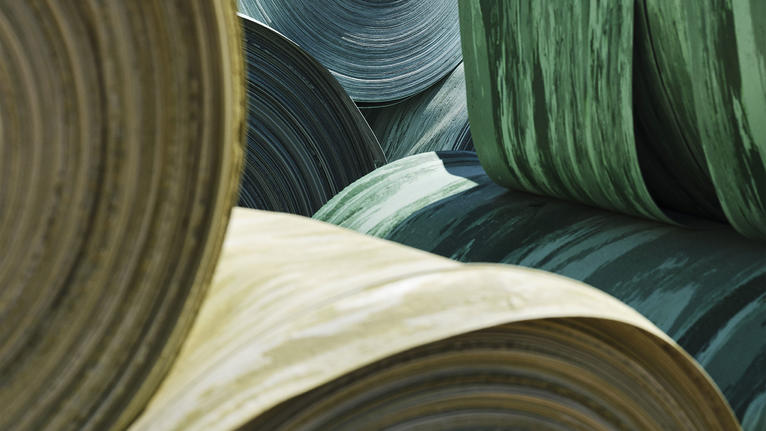Tarkett announced today its new Climate Roadmap for 2030, in full alignment with the Paris Climate Agreement objective to limit global warming to 1.5°C. The company will deliver a 30% reduction in greenhouse gas emissions across its entire value chain by 20301. Today, the independent organization Science Based Targets (SBTi) has started the evaluation and approval of Tarkett's greenhouse gas reduction targets.
Tarkett’s Climate Roadmap for 2030 covers reductions in greenhouse gas emissions from:
- Direct emissions from our own production of energy on site, like for instance fuel, gas or wood used in our own boilers (Scope 1).
- Emissions relating to the generation of purchased energy (electricity, steam, heating and cooling) we use within our business (Scope 2).
- All other indirect emissions across our value chain, including our suppliers' emissions through extraction and transport of raw materials, and post-use emissions like incineration at the end of use (Scope 3).
"Together with our teams, we have set climate targets consistent with the Paris Agreement,” said Arnaud Marquis, Chief Sustainability and Innovation Officer at Tarkett. “Now we are working closely with the SBTi to assess and approve our targets and to accelerate our contribution to a carbon-neutral world by 2050. These targets are extremely challenging, as only 10% of our emissions are linked to our own manufacturing operations. The rest comes from the use of raw materials, and the treatment and incineration of our products at end-of-use. Setting these targets for the entire value chain is a win-win situation – it helps to reduce our own greenhouse gas emissions and those of our customers. We have an important responsibility to change the game in our industry. We need all our stakeholders to join us on that journey, ensuring swift progress."
Over the last decade, Tarkett has reduced greenhouse gas emissions by 38% (Scope 1 and 2)2 and is now accelerating that progress under the 2030 Climate Roadmap. The company has recently achieved a B score by CDP. This represents the second highest level of maturity a company can reach at the world’s leading climate performance platform, illustrating the strong commitment of Tarkett teams involved in the Climate Roadmap. Greenhouse gas reductions are already being achieved through increased energy efficiency at production sites, renewable energy sourcing and eco-designed products. Through eco-design, Tarkett teams are selecting and using high-quality materials with a low carbon footprint. This approach based on Cradle to Cradle® principles diminishes the need for virgin raw materials while reducing the company’s carbon footprint. As part of its circular economy strategy, Tarkett has developed a dedicated flooring take-back and recycling program called ReStart®. This program helps customers diverting end-of-use flooring from incineration and landfill, ensuring recycling while reducing their carbon footprint.
The SBTi is a partnership between CDP, the United Nations Global Compact, World Resources Institute (WRI) and the World Wide Fund for Nature (WWF). Science-based targets are designed to keep the planet within its global carbon budget in order to limit the increase of global temperatures and the effects of climate change. The building industry can make a major contribution to resource preservation and the mitigation of climate impact, since it represents around 40% of global GHG emissions (production, transport & incineration) and 60-70% of total waste3.
--------------------
Note to the editors:
1 Versus 2019, scope 1, 2 and 3
2 Between 2010 and 2020, scope 1 & 2, absolute values in kg of CO2e
3 2019 Global Status Report for Buildings and Construction & International Energy Agency (IEA) & Eurostat)
